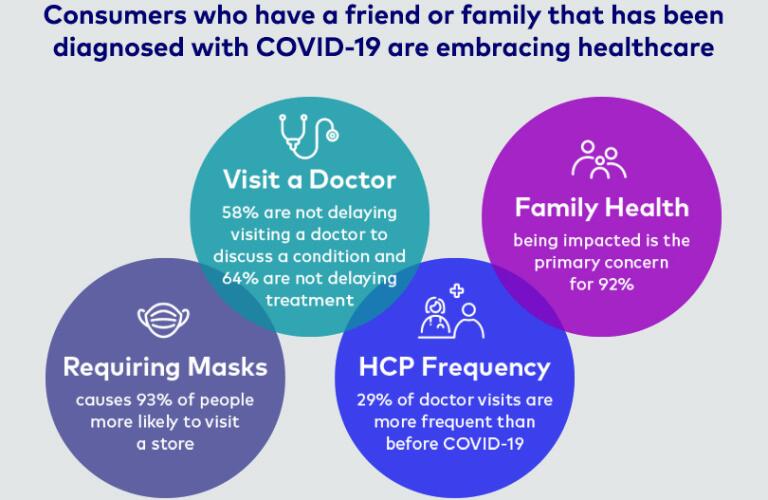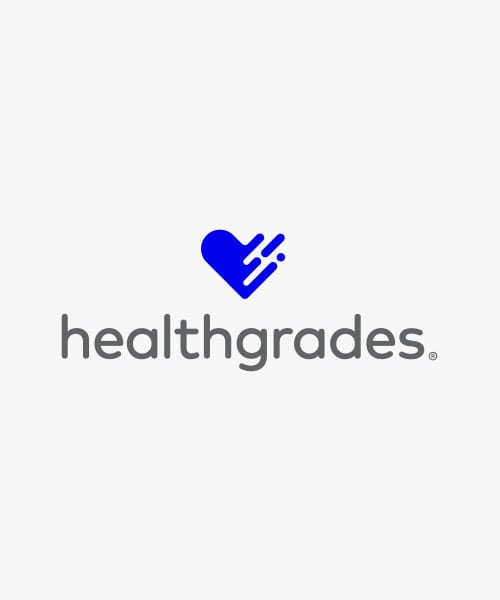Patient confidence in visiting healthcare providers is at the highest levels since the onset of COVID-19, according to the latest results from a study conducted by Healthgrades, in partnership with Infosurv. The COVID-19 Patient Confidence Study, an ongoing measure of consumer attitudes and behavior, shows that:
- 63% of consumers would be comfortable having an in-office medical procedure tomorrow, and 69% are comfortable visiting their PCP.
- 86% of consumers feel that telehealth can replace at least some in-person appointments, and half have participated in a telehealth appointment since the start of the virus.
- More than a third of consumers have had a close friend or family member diagnosed with COVID-19.
- Only 25% of consumers are delaying visiting a doctor to discuss a condition.
The 63% of consumers comfortable with having a medical procedure is in sharp contrast with the 49% who say they are comfortable dining at a restaurant and 28% traveling by plane. Health systems have done a good job communicating the safety precautions they have put in place and the use of telehealth as an option. More than half of consumers have had a telehealth visit since the beginning of the pandemic, effectively addressing pent-up demand and even adding new patients in some markets.
More than a third of consumers have had a close friend or family member diagnosed with COVID-19. Not surprisingly, consumers whose lives have been touched by the virus better understand the disease and the need to embrace healthcare. Overall, 62% of consumers say that COVID-19 has made quality of care more important or much more important. Providers must continue to reinforce the safety precautions they are taking — when asked what type of information providers need to communicate to help consumers feel more comfortable about getting care, information on safety precautions consistently ranks highest.
The impact of existing conditions on patient confidence
Though only 25% of consumers are delaying doctor visits, 75% of this subset are delaying appointments regarding existing conditions. That ratio has remained fairly consistent throughout the COVID-19 crisis, but it’s not clear why. Are those patients self-managing, and are their conditions worsening? Personalized outreach to patients known to have chronic conditions as well as at-risk populations should be a priority, and telehealth may be an attractive option.
Eight months into the pandemic, patients who have had any contact with a provider realize healthcare facilities are among the safest, with the most precautions and protocols. They understand they need to take care of their health and that delays may worsen their condition.
Patient confidence is high. Now’s the time to engage them.
Consumers are looking for care, and now is the time to engage them, with time to engage them targeted to the conditions they are most at risk for, informed by where they are in their patient journey. It’s also important to be visible where commercially insured consumers actively search for providers – on healthgrades.com, the #1 site where Americans find a doctor.
Patient confidence is high. Now’s the time to engage them.
Patient acquisition and retention are always top priorities, but even more so now. Hospitals need to drive revenue growth to recoup financial losses. Consumers are looking for care, and now is the time to engage them with personalized outreach informed by where they are in their patient journey and targeted based on the conditions they are most at risk. It’s also important to be visible where commercially insured consumers actively search for providers – on healthgrades.com, the #1 site where Americans find a doctor.
Knowing that patients are confident in visiting healthcare providers and understand the risks of putting off care should give marketers the signal they need to make smart digital investments that pay off.




